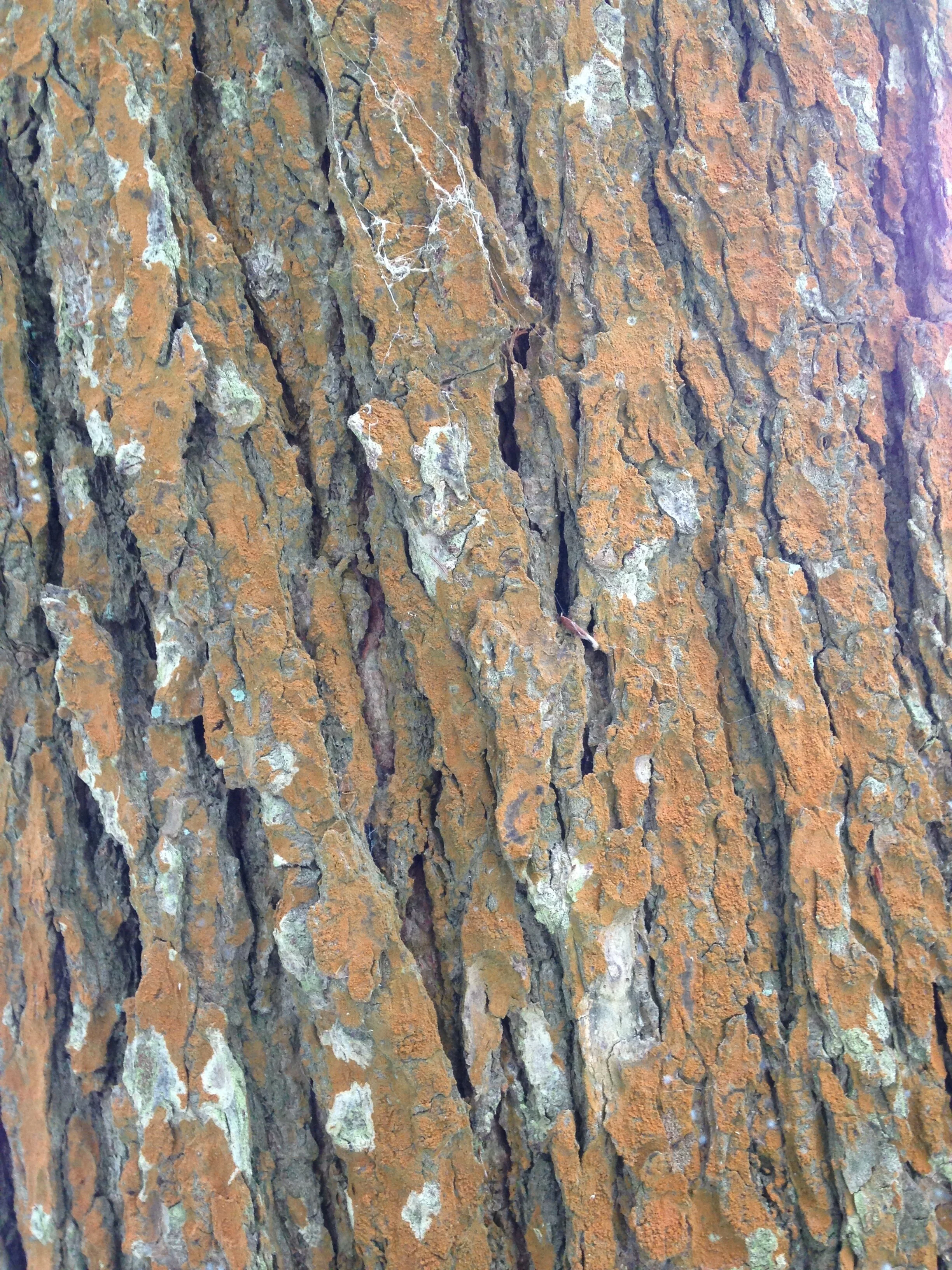Who are you? Trentepohlia Algae
Trentepohlia algae growing on Trembling Aspen (Populus tremloides) along Eramosa River Trail, 04.01.2021
A couple of days ago, I found sign of orange growth spreading across some tree bark. I didn’t know what it was but had seen it many times before and had never figured it out. Finally I did.
I wanted a place to deposit everything I am learning about Trentepohlia so I figured I would make a blog post and update as I learn more. Here’s what I have so far.
Trentepohlia growing on Eastern Hemlock (Tsuga canadensis) bark, Guelph Arboretum, 01.01.2021
The orangey stuff is in the photo above Trentepohlia, living on the bark of an Eastern Hemlock (Tsuga canadensis) tree. I have learned that Trentepohlia is a genus of free living green algae which grows on rocks and trees. There are 40 species worldwide, but about 8 recorded in nearby New England states.
Trentepholia can take many forms. It can be a free living algae, growing on trees and rocks on it’s own, but sometimes it grows with fungi in symbiotic relationships as Lichens. Lichens are generally made up of two parts, though sometimes 3 : the fungal component, mycobiont, which gives the Lichens their structure; the algal component, phycobiont, which does the photosynthesizing. The third part which some Lichens have is the cyanobacterium. Trentepohlia would be the phycobiont in that mutualistic symbiotic relationship.
Asexual reproduction can occur by 3 methods for Trentepohlia spp.; zoosporangia (mobile asexual spore which uses flagella to move), aplanospore (immobile spores that may nevertheless potentially grow flagella), and akinetes (dormant cells resistant to cold and desiccation, which can remain dormant until favorable growing conditions trigger germination back into a vegetative cell).
The orange colour comes from large amounts of carotenoids, the same sort of pigments that makes Carrots (Daucus carrota subsp. sativus) and autumn leaves orange. The carotenoids are so abundant that it hides the chlorophyll that would other render the Trentepohlia green. One neat thing I learned about is that where I found it, it was mostly growing on the North side of the trees, likely to be out of the sun which would dry out the algae too much.
Another interesting note is that Lichens which have Trentepohlia as the algal partner, the phycobiont, are “blowing up” or expanding range around the world. These algaes are moving Northwards from their common tropical and subtropical range and more locally growing into the Eastern part of the Great Lakes Bioegion and occupying more areas due to warming and wetter Winters. Often, Lichens avoid urbanized envrionments because they are very senstive to pollutants, but for some reason the Trentepohlia as a solo algae, and as partner in a Lichen complex, is thriving.
In fact, all lichens containing Trentepohlia occurring in the [study site area] have increased in abundance. Increases in lichen abundance can be attributed to a relatively few species containing Trentepohlia. This suggests global warming may have affected Trentepohlia directly rather than the fungal components.
- A. Aptroot, C.M. van Herk, Further evidence of the effects of global warming on lichens, particularly those with Trentepohlia phycobionts, Environmental Pollution, Volume 146, Issue 2, 2007, Pages 293-298,
I have seen Trentepohlia in three places now. Once along the Bruce Trail with my friend Matt in 2018 0r 2019? I have also seen in on a large Spruce (Picea spp.) at the Krug Forest on the trail a little ways in from the gate. The most recent sighting was at the University of Guelph Arboretum on some of the Hemlock trees.
I have heard that if you check it out with the field lens you can see the little stacked colonies looking like fuzzy hairs, though I have not seen this yet. Perhaps my field lens isn’t powerful enough, or the algae has not developed enough to show stacked colonies?
Trentepohlia was named by a German botanist, Carl Friedrich Philipp von Martius, after another German botanist Johann F. Trentepohl, cause they were colleagues, not because the name has anything to do with the algae itself (boring!). But, just by chance, the origin of the name Pohle may have it’s origins in meaning “one who lives by the water/pool”. So by strange twists, it may be accurate. Trente means 30.
To learn more :
Red Bark Phenomenon to download the document, or to read online click here - Eastern White Pine, Eastern Hemlock In Connecticut and Massachusetts, there have been many recent observations of a novel condition which causes intense reddish orange coloration of tree bark, termed here for the first time as the red bark phenomenon (RBP).



